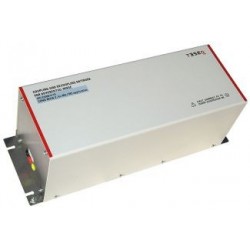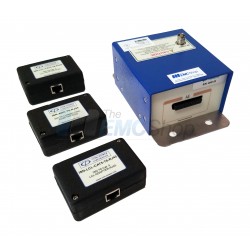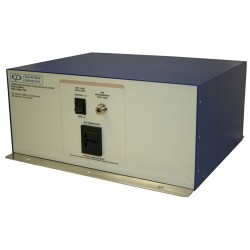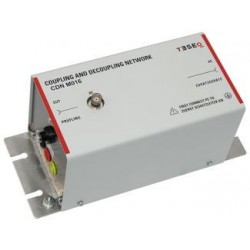No products
Product successfully added to your shopping cart
There are 0 items in your cart. There is 1 item in your cart.
CISPR Standards
- EMC Test Equipment
- Transient Generators
- RF Power Amplifiers
- DC - 300 kHz RF Amplifiers
- 10 kHz - 250 MHz RF Amplifiers
- 10 kHz - 400 MHz RF Amplifiers
- 10 kHz - 1 GHz RF Amplifiers
- 80 MHz - 1 GHz RF Amplifiers
- 1 GHz - 2 GHz RF Amplifiers
- 700 MHz - 4.2 GHz RF Amplifiers
- 1 GHz - 6 GHz RF Amplifiers
- 2 GHz - 8 GHz RF Amplifiers
- 6 GHz - 18 GHz RF Amplifiers
- 18 GHz - 40 GHz RF Amplifiers
- Pulse Amplifiers
- RF Field Strength Probes & Meters
- RF Conducted Immunity
- EMC Receivers/EMI Analyzers
- EMC Antennas
- Coupling Decoupling Networks (CDN's)
- Line Impedance Stabilization Networks (LISN's)
- RF Test Equipment
- EMC Probes
- EMC Measurement & Equipment Software
- Power Supplies
- Electrical Safety Analyzers
- High Precision Laboratory Power Analyzers & Meters
- Anechoic Chambers
- Over-the-Air (OTA) Test Chambers
- EMI RF Shielded Tent Enclosures
- RF Shielded Rooms
- EMC Absorber
- Positioning Equipment
- EMC/EMI Test Setup
- GTEM Cells / TEM Cells
- Reverberation Chambers
- Used RF Anechoic Chambers
- EMC Chamber Filters
- EMC Chamber Shielding Gaskets
- RF Shielded Doors
- Anechoic Chamber Accessories
- Fully Anechoic (FAR) Test Chambers
- Manufacturers
- 3ctest
- AE Techron
- AH Systems
- Amplifier Research
- Boonton
- Com-Power
- Diamond Engineering
- EM Test (Ametek CTS)
- EMC Partner
- EMC Test Design
- Empower High Power RF Amplifiers
- ETS-lindgren
- Log Periodic Dipole Array Antenna
- Near Field Probe Sets
- Double Ridge Horn Antennas
- Biconical Antennas
- Quad Ridge Horn Antennas
- Electric Field Probes
- GTEM's
- Positioners & Tripods
- Loop Antennas
- Biconilog Antennas
- LISN's (Line Impedance Stabilization Network)
- Shielded Enclosures/Rooms
- Monopole Antennas
- Field Generating Antennas
- Fischer Custom Communications
- Haefely Hipotronics
- Haefely EFT/Burst Immunity Test Systems
- Haefely Surge Combination Wave Test Systems
- Haefely Surge Damped Oscillating Wave Test Systems
- Haefely Electrostatic Discharge Test Systems (ESD)
- Haefely Surge Ring Wave Test Systems
- Haefely Surge Telecom Wave Test Systems
- Haefely Magnetic Field Test Systems
- Haefely CDN's (Coupling/Decoupling Networks)
- IFI Amplifiers
- Keysight (Agilent)
- MVG - Microwave Vision Group
- PMM / Narda
- Rohde & Schwarz RF Test Equipment
- Rohde & Schwarz Broadband RF Amplifiers
- Rohde & Schwarz Spectrum Analyzers
- Rohde & Schwarz Compliant EMI Test Receivers
- Rohde & Schwarz Isotropic RF Probes
- Rohde & Schwarz RF Signal Generators
- Rohde & Schwarz RF Switches
- Rohde & Schwarz Oscilloscopes
- Rohde & Schwarz RF Power Meters
- Rohde & Schwarz RF Power Sensors
- Schloder
- Schwarzbeck Mess-Elektronik
- Schwarzbeck Antennas
- Schwarzbeck Automotive Antennas
- Schwarzbeck Broadband Horn Antennas
- Schwarzbeck Biconical Antennas
- Schwarzbeck Logarithmic Periodic Broadband Antennas
- Schwarzbeck Stacked Log-Periodic Broadband Antennas
- Schwarzbeck Biconic Log-Periodic Antennas
- Schwarzbeck Dipole Antennas
- Schwarzbeck Rod Antennas
- Schwarbeck Antenna Baluns / Holders
- Schwarzbeck LISN Line Impedance Stabilisation Networks
- Schwarbeck Decoupling & Absorbing Clamps
- Schwarzbeck Field Probes
- Schwarzbeck Helmholtz Coils
- Schwarzbeck Antenna Masts
- Schwarzbeck Coupling/Decoupling Networks
- Schwarzbeck Antennas
- Solar Electronics
- Teseq (Schaffner)
- Teseq Automotive Transient Generators
- Teseq RF Test Equipment
- Teseq EFT/Burst Generators
- Teseq RF Immunity Generators
- Teseq ESD Guns
- Teseq Surge Generators
- Teseq Harmonics & Flicker Solutions
- Teseq Dips, Interrupts & Variations Equipment
- Teseq Ring Wave Generators
- Teseq Oscillatory Waves Generators
- Teseq Absorbing Clamps / Ferrite Tube
- Teseq EMC Antennas
- Teseq Current Probes
- Teseq Coupling Networks
- Thermo Keytek
- Vicreate
- Compliance Standards
- International (IEC/EN)
- EN/IEC 61000-3-2
- EN/IEC 61000-3-3
- IEC 61000-3-11
- IEC / EN 610000-3-12
- EN/IEC 61000-4-2
- EN/IEC 61000-4-3
- EN/IEC 61000-4-4
- EN/IEC 61000-4-5
- EN/IEC 61000-4-6
- EN/IEC 61000-4-7
- EN/IEC 61000-4-8
- EN/IEC 61000-4-9
- EN/IEC 61000-4-10
- EN/IEC 61000-4-11
- EN/IEC 61000-4-12
- EN/IEC 61000-4-16
- EN/IEC 61000-4-18
- EN/IEC 61000-4-19
- EN/IEC 61000-4-20
- EN/IEC 61000-4-21
- EN/IEC 61000-4-29
- EN/IEC 61000-4-31
- IEC 61000-4-39
- EN/IEC 62132
- SEMI F47 Voltage Sag Immunity
- Product Standards
- Military & Aerospace Standards
- Automotive EMC Standards
- CISPR Standards
- Telecom Testing
- ANSI/IEEE Standards
- FCC Part 15
- FCC Part 30
- International (IEC/EN)
- Application/Test Type
- Radiated Immunity
- Bulk Current Injection Testing
- RF Emissions Testing
- Conducted Immunity
- Conducted Emissions
- Antenna Pattern Measurement
- CE Mark Testing
- Intentional Radiator Testing
- Pulsed HIRF Radar
- Over-the-Air (OTA) Testing
- 5G Test Solutions
- Automotive EMC
- SAR Measurement Equipment
- Radiated Emissions
- Battery Simulator Test Equipment
- Services
- Clearance
Viewed products
-

Rent Teseq CDN M016...
Coupling/Decoupling Network (CDN) CDN...
-

Teseq CDNE M310...
Frequency range 30 to 300 MHz 520 V,...
Rent Teseq CDN M016 Switchable 16 Amp Coupling/Decoupling Network
New
- Coupling/Decoupling Network (CDN) CDN M Type
- Designed for IEC/EN 61000-4-6 Conducted RF Immunity Testing
- CDN M016 switchable M2 or M3
- Types with 4 mm banana sockets
- Performance up to 230 MHz
In Stock
Specifications
| Voltage Rating | AC max. voltage (line to ground): 250 V DC max. voltage (line to ground): 400 V; 3 kV DC, 2 sec |
| Frequency Range | 150 kHz to 230 MHz |
| Standards Met | IEC/EN 61000-4-6 |
| RF Connector | BNC 50 Ω |
| Mains & EUT Connections | 4 mm banana |
| Current Rating | 16 Amps |
| Common Mode Impedance | 150 kHz to 26 MHz: 150 Ω ±20 Ω 26 MHz to 230 MHz: 150 Ω +60 Ω / -45 Ω |
| Application/Test Type | switchable 2 or 3 power lines, (L+N or L+N+PE) |
| Insertion Loss | Less than 0.1 dB |
| RF Input Voltage | 30 Volts (Max) |
| Voltage Division Factor | 150 kHz to 80 MHz: 9.5 dB ±1 dB80 MHz to 230 MHz: 9.5 dB +3 dB / -2 dB |
| Decoupling of Common Mode Disturbance | 150 kHz: Greater than 30 dB1.5 MHz: Greater than 60 dB30 MHz: Greater than 40 dB230 MHz: Greater than 20 dB |
| Dimensions | 3.9" x 3.9" x 9.5" (100 mm x 100 mm x 240 mm) |
| Weight | 3.3 Lbs (1.5 kg) |
Test Equipment Description
How to Rent the Teseq CDN M016:
- Click "Add to Cart" above
- Register or Check Out as a Guest
- Select Shipping Method (use "My Account" and input your account # and method)
- Order Confirmation and Tracking Info Follows
About the Teseq CDN M016:
IEC/EN 61000-4-6 specifies the design and performance of a range of coupling/decoupling networks (CDNs). Each CDN is specific to the type of cable and the intended signal carried on the cable. Teseq offers an extensive range of CDNs which fully comply with the requirements of the standard and provide a simple and reliable method of injecting RF energy into the equipment under test (EUT).
Whilst the published standard only specifies the performance of CDN from 150 kHz to 80 MHz, most of Teseq CDNs are specially designed to give the same performance to a wider frequency range. This is required by some product specific standards. Each CDN is also useable for emission testing. Special types meet the requirements of CISPR 15 or can be used as impedance stabilization network (ISN) defined in CISPR 22.
Included with the Teseq CDN M016:
- M016 CDN
- QTY 2 CAL U100B
- SAR MA31
- QTY 2 SAR M300
- SAR M116
- A 50-N
- NIST Calibration with Data
- Carrying Case
- User Manual
All those part numbers confusing? Those are all the cal adapters required to get up and running








































